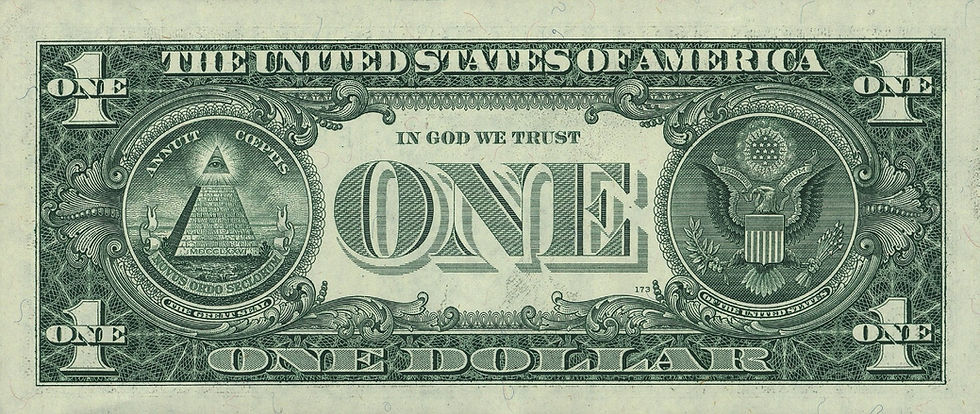From algorithmic trust to DAO: how emerging technologies are impacting governance
- Marco Zolla
- Jan 10, 2022
- 4 min read
Most of us find ourselves living in an over-structured society made of groups, communities and organisations, which will inevitably structure themselves, for whatever purpose, in some fashion.

These governance structures may have different levels of flexibility, formality, decentralisation, distribution of power and resources over the members. Therefore, any organisation is called to build its system of rules to manage interactions among members and stakeholders, driven by the purpose of ensuring its stability. While the top-down pyramidal organisations, where control is centralised at the top, may ensure more stability at first glance, this model requires strong confidence in the ones at the top or, in case, that those who are not at the top have no voice in the governance structure. On the other side, flat and less centralising governance models will instead require trust to be more distributed at the various levels of the organisation. However, to manage this distribution of the trust, a check and balance system shall be properly designed, otherwise certain stakeholders may adopt opportunistic behaviours to make their interest prevail against the others, with the risk of arising conflicts that may damage the organisation.
Reinventing the concept of trust
Besides these schemes, a different one, operating in an entirely digital dimension, can revolutionise traditional governance models. January 3, 2009, the date of the first transaction in the bitcoin blockchain, can be considered a historic date as, for the first time, a new interaction system reinvents the concept of trust to create what was called, in the well-known Bitcoin manifesto, 'A Peer-to-Peer Electronic Cash System'. Blockchain, the architecture used first by Bitcoin, and later, in different forms, by thousands of other initiatives, goes far beyond being considered as a mere IT infrastructure, and today it represents an innovation with deep implications also on the governance models of groups and organisations. Its peer-to-peer architecture, which secures every transaction within the network thanks to the use of cryptographic techniques, enables interactions where users trust the software and algorithms instead of any other internal or external entity. In a system powered by blockchain, trust does not disappear, as it moves towards an intangible and artificial entity in which decisions are made by algorithms. For this reason, blockchain creates a new type of trust, which has been defined as ‘algorithmic trust’. In algorithmic trust, the open-source software, accessible and verifiable by anyone, addresses the need for a check and balance mechanism, as users can check that their interactions and relationships happen according to the rules embedded in the software, which serves participants to trust the system.
The Decentralized Autonomous Organization (DAO)
One of the most promising potentials of blockchain is to make a wide multitude of individuals and entities able to interact and cooperate within a decentralised environment in a secure and trustless way. This is possible thanks to a new form of organisation, the Decentralised Autonomous Organisation (DAO), whose definition was first coined in 2013 by Larimer and Buterin. Although there are different definitions of DAO, which does not necessarily require being blockchain-based, we can see the DAO as an IT protocol running an organisational structure that operates in the absence of a central authority and whose governance is embedded in the software. Interactions within the DAO are carried out without intermediaries, and automating decision-making eliminates the need to have multiple management levels as in traditional organisations. There is no single type of DAO, as it is a structure that can be used for the most different purposes and activities, including both for-profit and not-for-profit ones, as well as there, are multiple models of DAO governance, with different levels of decentralisation, and participation of its members. More than being just an organisational transformation, DAO is proposing a real cultural change in the way we collaborate within organisations or communities. While until a few years ago such an organisation could only be imagined, today, even thanks to Web3 and to the next-generation blockchains, DAO is the default organisational scheme for blockchain projects and smart contract protocols, from NFT platforms to DeFi protocols or investment syndicates. This happens mainly because DAO, by exploiting the properties of blockchain, is the ideal structure to guarantee independence, accountability and transparency in the management of the organisation without relying on intermediaries or external trusted entities. However, the transformation coming from this new structure raises several questions from regulators around the world on the discipline to be applied to this organisation and to the relevant interactions within. Is DAO a new legal entity or is it equivalent to the codified corporate entities? How to identify the jurisdiction competent to regulate a DAO? What responsibilities are on DAO members for the assets and liabilities within the DAO? Contrary to the regulatory trends on the crypto assets, for which worldwide regulators in the last years have approved specific regimes, DAO still remains an unregulated structure in most jurisdictions.
Considering that DAO is still in its infancy, there are still impressive potentials in terms of evolution and use-cases. The fact that DAOs is the most suitable governance model for token economics systems, together with a blank regulatory framework, may represent a favourable momentum for experimenting with DAO models able to show a more human and sustainable way for working together in our over-digital society.
.png)



Comments